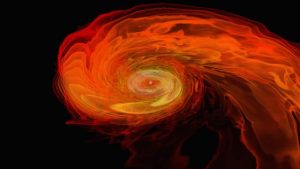The clock was invented by human beings to keep track of time. The atomic clock is one of the most accurate clocks in the world, it will not gain or lose one second in 15 billion years. Therefore, the time will not fly. However, sometimes we do feel that the time pass by quickly when we are having fun. The time seems to crawl when we are having a boring class.

Ytterbium Lattice Atomic Clock took by National Institute of Standards and Technology https://commons.wikimedia.org/wiki/File:Ytterbium_Lattice_Atomic_Clock_(10444764266).jpg
Some people suggest that when we are having fun, we are paying attention to what we are doing. Therefore, we can not notice that the time pass by. However, when we are feeling bored, we will focus on time and notice that the time crawls.
Dr. Michael Shadlen said that “Every thought has various horizons”.Time flies according to these horizons. When we are really focusing on doing something, our mind can see the near horizons and the distant horizons. This makes the time goes by fast. In contrast, when we feel bored then we can only notice the near horizons and the horizons are not link to each other. As a result, time crawls.
It can also be related to the cells in the brain. Neuroscientist Joe Paton found out the neurons in our brain will release neurotransmitter dopamine which is a type of chemical that impacts how the brain feels about the time. When we are having fun, the neurons will release much more chemicals than usual. These chemicals make us feels that less time goes by. On the other hand, if we release lesser this type of chemicals, the time will go slowly in our mind.
In conclusion, time does not fly in reality. However, it does fly in our mind when we are having fun.


